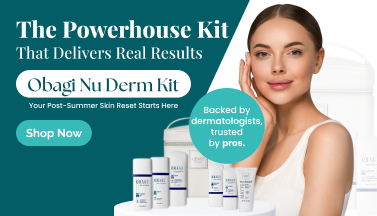If you’ve ever shopped for beauty products, you’ve heard about retinol. So many creams and lotions contain it, and the hype is constant. But what is retinol? And why is it beneficial to your skin?
What Is Retinol?
Retinol is a form of Vitamin A, which has long been held as the fountain of youth in the anti-aging skin care world. It helps to turn your skin cells over more quickly leaving your skin smoother and younger looking. It also helps to stimulate collagen production smoothing away fine lines and wrinkles. Retinol is available in varying strengths; the strength of the retinol will also greatly determine how well it will work and the results you will see.
Over-the-counter retinols can be found in drugstores and cosmetic counters. This is the lowest level of retinol, but most come in the form of serum which is the best way to deliver retinol as it is more easily absorbed by the skin.
Medical grade retinol is stronger than over-the-counter, but not as concentrated as prescription strength. Medical grade products can be found in doctor’s offices or high end medical spas. They come in serums, creams and gels. To know if you are getting a true retinol product, the cream or serum will be yellow in color.
Prescription strength retinols are actually called retinoids and are available only by prescription. You may have heard these called tretinoin and more commonly you’ve heard them called by brand names such as Retin-A. These products work quickly and provide results in as little as 4 weeks. You will often have skin irritation as your skin acclimates and you may have to build up to using it every night.

How Does Retinol Work?
Once retinol comes into contact with skin, your body’s enzymes convert it into retinoic acid, the active form of vitamin A, and it gets absorbed into the lower layers. In addition to protecting skin and repairing damaged cells, retinol also resets cell turnover. This quality makes it ideal for treating acne and wrinkles. The process of converting retinol into retinoic act takes time; it can take 3-6 months of daily use to see a noticeable difference. 
Retinoids, the prescription strength version of retinol works faster because it starts out at retinoic acid so it doesn’t have to convert, so you can see skin improvement in 4-8 weeks versus months. With this quick result also carries the possibility of skin irritation and in some cases peeling, so this is something to consider. You can go slow and steady with a retinol and have no irritation or aggressive right out of the gate and have some skin irritation and peeling.
Whatever route you choose you’ll enjoy clear skin; retinol makes it harder for your pores to clog and to become congested. It also reduces sebum activity, which will reduce oil production. Because of these properties, retinol acts as an exfoliant that minimizes fine lines, improves texture, protects against dryness and redness, and fades hyperpigmentation (sun damage and age spots).
How to Use Retinol?
When you’re purchasing retinol products, look for over-the-counter skincare items formulated with at least 0.1 percent of retinol, packed in aluminum tubes or dark airtight bottles; these allow less light and air inside, which can degrade retinol’s effectiveness.
Note, however, that using retinol will make your skin more sensitive to the sun’s dangerous UV rays, so make sure to use a sunscreen while using retinol or retinoid products. It is also recommended to use these products at night and not during the day. Your skin may take some time to become acclimated to retinol, so build up your usage based on how well your skin is handling this new product. Goal is to use it every night as long as it’s tolerated.
You can certainly get vitamin A through your food intake, assuming you eat the right ones, but absorbing retinol through your skin makes the process faster and more direct. Retinol is very effective, and regular use can help your skin become brighter, softer, smoother, more even in texture and preserve its youthful appearance.














